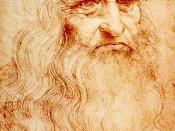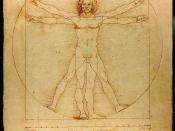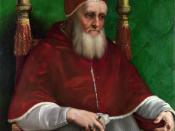Late in the Middle Ages, new ways of looking at life took hold in Europe and soon affected human affairs of all kinds as a new spirit of optimism, confidence, and creativity developed. This remarkable period began in the fourteenth in the city-states of Italy and lasted into the sixteenth century. It is known as the Renaissance, from the French word for "rebirth."
Renaissance scholars were interested in Greek and Roman learning. This developed into the study of the humanities--subjects concerned with humankind and culture, as opposed to science. Enthusiasm for ancient Greece and Rome spread from scholars to the rest if the Italian upper classes.
Unlike the medieval thinkers who thought of earthly existence chiefly as preparation for an afterlife, the people of Renaissance, following the examples of classical Greece and Rome, believed that life on earth should be lived as fully as possible.
The Renaissance people had new attitudes borrowed from classical times.
The people of the Renaissance were interested in the unique qualities that made one person stand out from others. They were also ambitious for fame and worldly success. These attitudes encouraged a spirit of curiosity and adventure.
The Renaissance was a time of change in technology as well as in culture. The most exciting development was the printing press. In the 1450's European first used movable metal type to print a book. By 1500 there were hundreds of printers, in nearly every country in Europe. This made bookmaking became much cheaper and faster.
Unlike the medieval art, Renaissance art, like classical art, emphasized the uniqueness of each human face and figure. In portraits, Renaissance artists tried to show each individual's character and personality in a lifelike way. While medieval painters had often drawn people larger than buildings, Renaissance artists tried to show people, trees,


